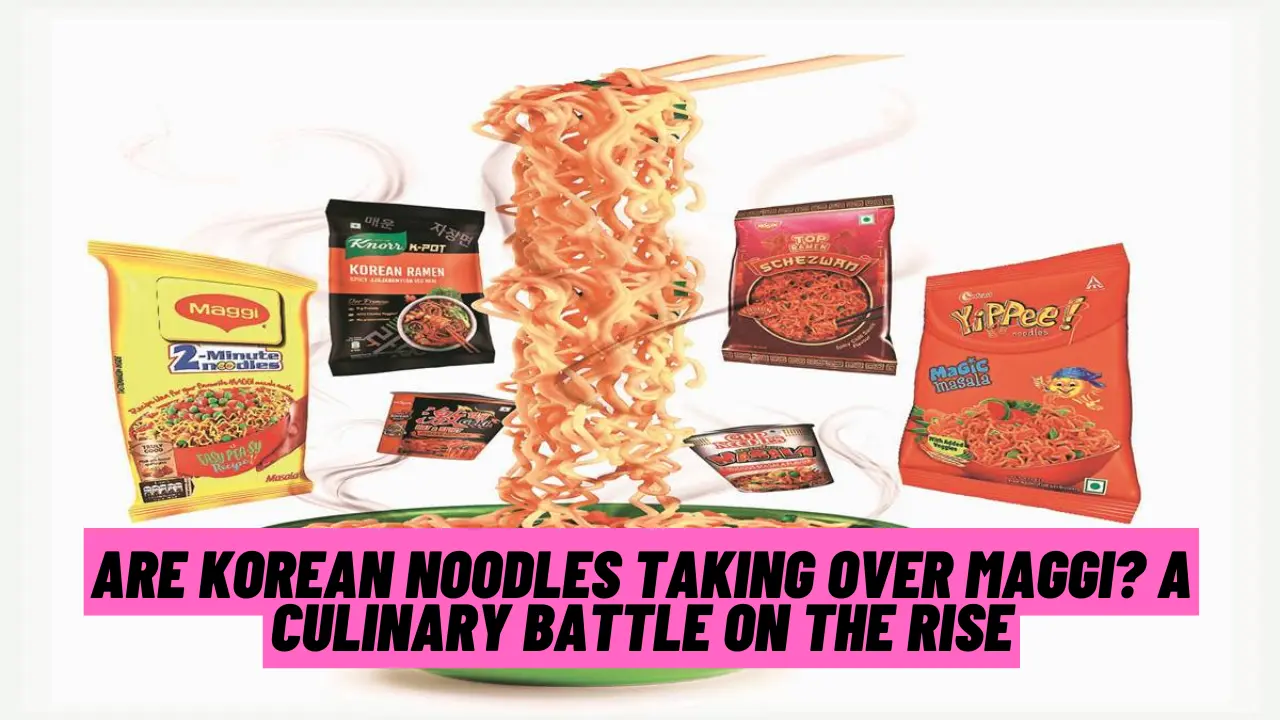For decades, Maggi has been the undisputed king of instant noodles in India. Whether as a quick snack or a midnight meal, Maggi has become synonymous with comfort food for millions. However, the landscape of instant noodles is evolving, and there’s a new contender in town: Korean noodles. Known for their bold flavors and unique varieties, Korean noodles are rapidly gaining popularity, sparking a fascinating culinary battle.
The Reign of Maggi
Maggi, introduced by Nestlé in India in the early 1980s, quickly became a household name. Its iconic 2-minute cooking time and familiar masala flavor made it a staple in Indian kitchens. Over the years, Maggi expanded its product line with different flavors and variants, but the original masala remains a favorite. Despite a brief setback in 2015 due to a controversy over lead content, Maggi made a strong comeback, reaffirming its dominance in the instant noodle market.
The Rise of Korean Noodles
In recent years, Korean noodles, or “ramyeon,” have started to capture the taste buds of Indian consumers. These noodles are known for their rich, spicy flavors, with popular varieties like Samyang’s “Hot Chicken Flavor Ramen” (often dubbed as “fire noodles”) and Nongshim’s “Shin Ramyun.” The appeal of Korean noodles lies in their intense and diverse flavor profiles, which differ significantly from the more subdued taste of Maggi.
The rise of K-culture, including K-pop and K-dramas, has also played a crucial role in popularizing Korean cuisine in India. Fans of Korean entertainment are eager to try the food they see on screen, leading to a surge in demand for Korean noodles.
Key Differences
- Flavor Profile:
- Maggi: Known for its mild, masala flavor, Maggi appeals to a wide audience, including children and adults who prefer less spicy food.
- Korean Noodles: Typically spicier and more intense, with a variety of flavors that range from savory to extremely spicy.
- Variety:
- Maggi: While it offers a few different flavors, the core product line remains relatively simple.
- Korean Noodles: Offers a wide range of flavors and textures, from seafood to cheese-flavored noodles, appealing to adventurous eaters.
- Cooking Time:
- Maggi: Quick and easy, with a standard cooking time of 2 minutes.
- Korean Noodles: Often require a bit more preparation, sometimes involving multiple steps like boiling noodles and adding different seasoning packets.
Market Trends
The Indian market has seen an influx of imported Korean noodles in supermarkets and online platforms. Their growing popularity is evident from the increasing shelf space they occupy in grocery stores and the rising number of social media posts featuring Korean noodle challenges. However, Maggi still holds a significant share of the market due to its established presence and affordability.
The Future of Instant Noodles in India
While Korean noodles are gaining traction, it is unlikely that they will completely take over Maggi’s market share. Instead, they are carving out a niche for themselves among younger consumers and those looking for new and exciting flavors. Maggi, with its deep-rooted connection to Indian culture, will likely continue to dominate as the go-to comfort food, while Korean noodles may become a popular alternative for those seeking variety.
Quick Review:
Q: What has been Maggi’s position in the Indian instant noodle market?
A: Maggi has been the dominant force in the Indian instant noodle market for decades. Introduced by Nestlé in the 1980s, it quickly became a staple in Indian households, known for its quick 2-minute preparation time and iconic masala flavor. Despite facing challenges, such as the 2015 lead controversy, Maggi has maintained its position as the go-to instant noodle for millions of Indians.
Q: Why are Korean noodles gaining popularity in India?
A: Korean noodles, or “ramyeon,” are gaining popularity due to their bold and diverse flavors, which offer a different experience from the traditional taste of Maggi. The rise of K-culture, including K-pop and K-dramas, has also played a significant role, as fans are curious to try the food they see on screen. Social media trends, like the “fire noodle challenge,” have further boosted their popularity.
Q: How do Korean noodles differ from Maggi in terms of flavor?
A: Maggi is known for its mild, masala flavor, which appeals to a broad audience, including those who prefer less spicy food. In contrast, Korean noodles are typically much spicier and come in a wide range of flavors, from savory to extremely spicy, catering to those who enjoy intense and adventurous tastes.
